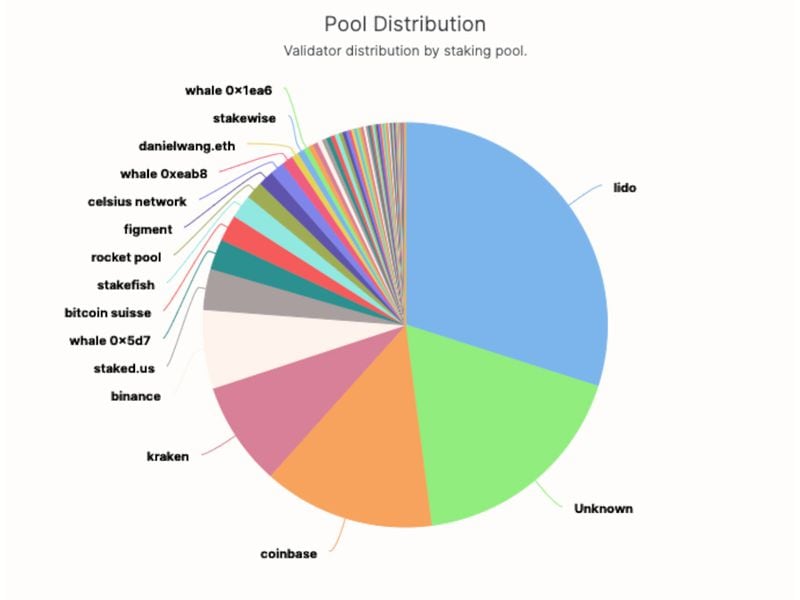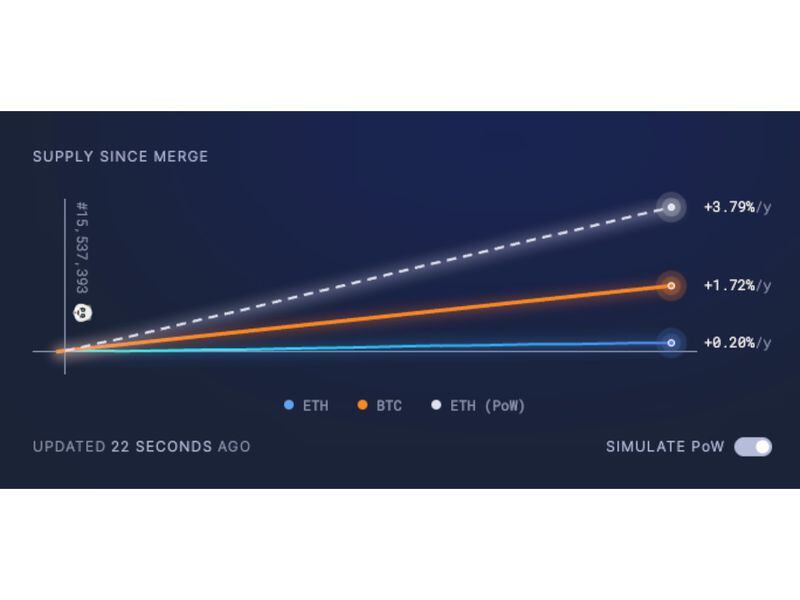Evaluating Ethereum: 1 Week After the Merge

Last week, Ethereum made its historic shift from proof-of-work to proof-of-stake – officially abandoning the energy-intensive, miner-based system that it had previously used to process updates to its decentralized ledger.
In crypto circles, the occasion of the Merge was observed like a holiday – celebrated virtually and in person at watch parties complete with music, speeches and even some special guests.
This article originally appeared in Valid Points, CoinDesk’s weekly newsletter breaking down Ethereum’s evolution and its impact on crypto markets. Subscribe to get it in your inbox every Wednesday.
The largest Merge watch party was sponsored by the Ethereum Foundation and featured talks from Ethereum co-founder Vitalik Buterin and other community leaders. It had 41,000 concurrent YouTube viewers at its peak.
The fact that the Merge happened overnight in much of the world only added to the excitement for many viewers. Staying up until 3 a.m. and waiting for Ethereum to finalize its first proof-of-stake blocks felt like waiting for the ball to drop in Times Square on New Year's Eve. In both cases excitement built up to a critical moment when – in just an instant – the world flickered from one reality to another.
But just as watching a crystal-studded disco ball slowly descend a pole feels a bit contrived, one couldn’t help but feel a bit underwhelmed when, after years of waiting, a successful Merge was marked by blocky, difficult-to-decipher text on a black-and-white computer terminal. At least New Year’s Eve had fireworks.
The network is, however, already showing signs of change.
Read more: The Ethereum Merge Is Done, Opening a New Era for the Second-Biggest Blockchain
Decreased energy costs
The first and most obvious immediate impact of the Merge was the one that it had on the network’s energy usage. Switching from mining to staking meant ripping out precisely the component of blockchain tech that gives it a bad environmental reputation.
Proof-of-stake’s lottery-based system for proposing blocks is vastly more energy efficient than its power-hungry proof-of-work predecessor.
Justin Drake, a researcher at the Ethereum foundation, told CoinDesk he predicted that the Merge – by shifting the second-largest blockchain network to a more efficient mechanism – would decrease global energy use by 0.2%.
This statistic has been disputed. In the short term, many Ethereum miners have found refuge on other networks, like Ethereum Classic, which continues to operate using proof-of-work. The movement of one-time Ethereum miners to these other chains has slightly damped the impact the Merge will have on decreasing overall crypto emissions.
But in the long term, mining on proof-of-work blockchains is unlikely to become profitable enough for most Ethereum mining outfits to continue operating.
Chandler Guo, the miner behind a controversial Ethereum proof-of-work fork (ETHW), admitted as much himself in an interview with CoinDesk’s “First Mover”: “Some people [miners] have free electricity and can [continue] to work on the [ETHW chain],” Guo said. “The other 90%, bankrupt.”
Moving to Bitcoin is not really an option either because the computer chips that are best suited to mining on Ethereum (GPUs) tend to be poor at mining on Bitcoin, whose miners typically use specialized computer chips called ASICs.
So while the immediate environmental impact of the Merge was blunted somewhat by the existence of other proof-of-work chains, its net-positive impact on emissions continues to look sunny.
Read more: Did the Ethereum Merge Drop ‘Worldwide Electricity Consumption’ by 0.2%?
New validators
Ethereum's new validator system ushered in a new cast of characters responsible for keeping the chain up and running. With these new characters came new concerns around network centralization.
Shortly following the Merge, Gnosis Chain founder Martin Köppelman drew attention for a tweet observing that 420 of Ethereum’s first 1,000 proof-of-stake blocks were proposed by just two entities: Lido, the community validator collective we’ve talked about before in this newsletter, and Coinbase, the U.S.-based crypto exchange.
Ethereum developers frame proof-of-stake as a more decentralized and secure alternative to mining – making it possible for anyone with 32 ETH to play a role in supporting the network, no fancy equipment required.
As the Ethereum Foundation’s Time Beiko explained to CoinDesk ahead of the Merge last week, “Proof-of-work is a mechanism by which you take physical resources and you convert them into security for the network. If you want your network to be more secure, you need more of those physical resources. On proof-of-stake, what we do is we use financial resources to convert to security.”
But a few entities like Lido, Coinbase, Kraken and Binance have amassed more than 50% of the resources required to secure the network. They’ve done so by making it possible for people with less than 32 ETH to pool their resources and become validators – almost like a crypto equivalent of fractional shares.

Centralization is not just a proof-of-stake problem. Köppelman followed up his original tweet by noting that Bitcoin, which continues to use proof-of-work, also has issues with centralization: “No, dear Bitcoin fans, it is not better in Bitcoin. In fact you need only 4 entities to come to >72%”
But it’s hard to make a 1:1 comparison between Bitcoin’s mining pools, which include computers owned and operated by individual miners, and Ethereum’s staking pools – which include staked ETH from a mix of holders. One of the key differences: While Bitcoin miners can remove their equipment from a pool, Ethereum stakers won’t be able to remove their stake until Ethereum's Shanghai update, which is still six to 12 months out.
This means Etheruem’s pool operators can, at least for now, act without fear that their users will get angry and cut ties. (To be fair, Lido spreads its stake among several different validator services – meaning it should be more difficult for one party to act unilaterally against the network’s best interest.)
Whether or not it has become worse under proof-of-stake, why might centralization be a problem? Well, we’ve seen recently that centralization makes it easier for regulatory agencies to exert influence over a blockchain’s operations.
Recent U.S. sanctions against Tornado Cash – the Ethereum mixer program used to obfuscate transactions – are forcing validators and their legal teams to determine whether they need to stop Tornado-linked transactions in order to comply. If enough validators refuse to propose or attest to blocks containing Tornado-linked transactions, it will become difficult for those transactions to make it onto Ethereum’s ledger.
With a lawsuit earlier this week hinting that the U.S. Securities and Exchange Commission considers the entirety of Ethereum as falling under its jurisdiction, one imagines that centralization concerns will continue to take center stage in the months ahead.
Reduced issuance
The most visible on-chain impact of the Merge has been on the issuance rate of ETH, the network’s native currency.
With Ethereum’s update to proof-of-stake, the network has drastically reduced the amount of new ETH issued with every block. In the long term, due to a burning mechanism introduced with the network upgrade EIP-1559, there’s a possibility that this may make Ethereum deflationary – meaning its token supply could decrease over time.
Ethereum is not deflationary yet: Around 4,000 new ETH have been issued since the Merge. But this is still around 95% less ETH than would’ve likely been issued under proof-of-work (around 70,000 new ETH, according to ultrasound.money).

The price of ETH has dropped significantly since the Merge. But for ETH holders, reduced issuance has been heralded as one reason to remain hopeful: Less ETH in circulation means every individual token is theoretically more valuable.








